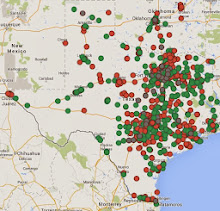
Title: Modernist Cuisine: The Art and Science of Cooking
Authors: Nathan Myhrvold, Chris Young & Maxime Bilet
Published: 2011 by The Cooking Lab
What does a book about fancy cooking with sous vide bags and liquid nitrogen have to do with barbecue? One of the coauthors, Nathan Myhrvold, is a competition barbecuer with a serious scientific curiosity of the smoking process. He also has a love for Texas BBQ as evidenced by this recent article singing the praises of Central Texas. While much of this book is dedicated to new techniques for food preparation using the latest gadgets that cost thousands of dollars, there are sizable chunks that explain the smoking of meat.
Currently listed on Amazon for $450.07, my own copy was not attainable. Lucky for me, a kind soul in Dallas let me borrow his copy with no strings attached. I read through it voraciously.
Volume One begins with basic techniques for cooking, one of which is smoking. What's included here isn't a guided process for great smoking, but instead an in depth look at the quality of the actual smoke used for cooking and how it can affect the final flavor of the meat. Phenols are created when lignin (in the wood) is burned and creates complex and pleasing flavors. Mesquite is high in lignin giving it more of an aromatic quality than most woods. Smoking also doesn't have to be done with wood. Corn cobs are said to produce a "pronounced earthy aroma". Let me know how that goes if you give the corn cob smoking method a whirl.
For the optimal hot smoking environment, the book suggests a fire burning at roughly 590 degrees, but a cooking chamber temperature no higher than 225 degrees. This allows for good quality smoke that contains plenty of positive phenols, but without all the tar that is emitted from smoldering wood. Also, to keep from having your wood smolder, DO NOT use wet or soaked wood. The dry stuff is what creates good smoke. Making use of most of the guidelines offered will still require a great deal of knowledge and finesse to pull off successfully in a home smoker, but in true modernist form, you can find that sous vide smoked brisket recipe with a cooking time of seventy-six hours along with countless other multi-day recipes in the final volume.
Volume Three titled "Animals and Plants" includes lengthy discussions on the muscle structure of animals and how that structure affects cooking technique and partially determines the tenderness of the meat. Fine-grained muscles like tenderloin are the most naturally tender cuts. They have a tight structure with less collagen surrounding the meat fibers while a brisket is the ultimate coarse-grained meat with large visible bundles of muscle surrounded by a thick collagen mesh. Coarse-grained meat just won't be tender until the collagen mesh is broken down, so it's no wonder that brisket takes an extended cooking time to reach a pleasing level of tenderness while a quick sear is enough for a tenderloin.
Thick collagen mesh surrounding large muscle bundles

In cooking brisket the goal is to convert that collagen into gelatin. While the brisket is heating up in the smoker, the first reaction of the collagen is to shrink and contract the whole muscle. The conversion of the collagen into gelatin takes much longer than just cooking the meat, so don't rely solely on the meat reaching a certain temperature. Seasoned pitmasters will tell you they don't rely on temperature at all but just the feel of the meat. The meat must relax, almost like it finally exhales on the pit after holding its breath for hours. It sounds so sage-like, but it's just the science behind gelatinization.
Although higher temperatures will convert collagen to gelatin more quickly, it also allows the collagen to constrict the meat more rapidly and forcefully wringing the meat of valuable moisture. The more slowly you cook (or smoke) the less tightly the collagen constricts and more moisture remains in the meat. Brisket must smoke low and slow for a reason.
When you're cooking such a large piece of meat at a low temperature there is a natural stall that takes place. The meat's internal temperature steadily rises to a plateau point below the desired finished temperature. On page 212 you'll find a succinct explanation of what causes the 'stall' in the meat temperature of large pieces of smoking meat. This was also a subject recently discussed by Meathead of Amazing Ribs with almost identical conclusions. Surface moisture on the meat continues to cool the the meat through evaporation. Just like our own sweat cools our bodies, the meat's temperature is kept lower until the surface of the meat has dried enough to stop the evaporation. This provides definitive evidence that spraying or mopping the meat during cooking not only slows the cooking process by letting heat out every time the lid is opened, but it also adds unnecessary moisture to the meat's surface.
Other tidbits not mentioned above include a physical description of what occurs to the moisture in meat when it 'rests', how unsaturated fats like those found in pork ribs can oxidize after cooking causing off flavors that I usually describe as tasting old (while the technical term is 'warmed over'), and a full run down of sausage types and techniques for grinding and stuffing that create a multitude of textures. I'll dive deeper into sausage in a future post.
If any of this sounds interesting to you, I assure you it's just scratching the surface. Now you'll have to pick up your own copy of the book
- BBQ Snob











2 comments:
Myhrvold needs to consult a butcher about brisket terminology. Flat <> Point. Point <> Deckle. These are three different sections, and packed briskets don't come with the deckle. Flat is the lean part, and point is the fatty part. The deckle connects the brisket to the ribcage. Brisket = Flat + Point.
I've had cob smoked ham from the Hudson Valley region in NY state. It lends a sweet, earthy quality to the meat. You've got to try it someday!
Post a Comment